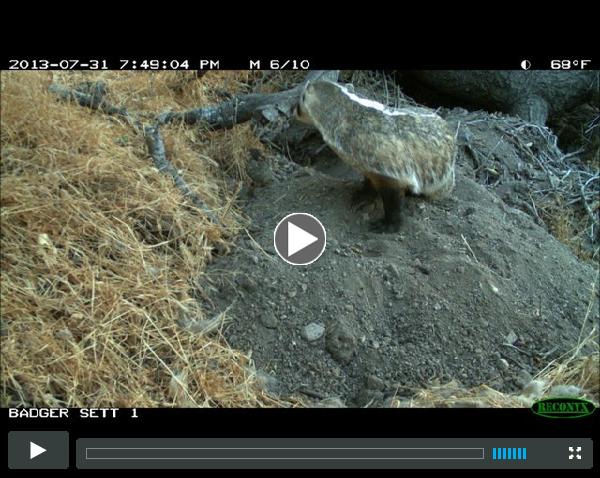Please Join us for the Santa Ynez Valley Premier of Mike Love's documentary film
Santa Ynez River Wilderness:
A Natural History
Friday September 20th @ 6pm
co-sponsored by the Santa Ynez Natural History Society and the Wildling Museum
|
|
UPCOMING EVENTS
Walking Ecology Lecture
Friday, November 8th
Space Exploration - the Final Frontier?
George Carlisle, NASA
6pm-9pm
Public Hike
Saturday, November 9th
8am - 1pm
Walking Ecology Lecture Friday, December 13th
Sedgwick Perspectives - an Artist and a Scientist
Bruce Tiffany & Hank Pitcher, UCSB
9am - noon
Public Hike
Saturday, December 14th 8am - 1pm Walking Ecology Lecture Friday, January 24th Ticks and Lyme Disease in Santa Barbara County Andy McDonald, UCSB
9am - noon Public Hike Saturday, January 11th 8am - 1pm
|

Masting is subject of interest to anyone who likes to eat...
Click here to read a pdf of the article about how and why oaks produce highly variable seed crops from one year to the next, from American Scientist
|

Survey results are in and clearly an overwhelming majority of you would like to see the annual barn dance held on a
Saturday so Saturday it will be! Saturday July 12th, 2014 is now the date of next year's barn dance!
|
|
|
|
|
Los Olivos Day's
A Day in the Country
Saturday, October 19th
9am - 4pm
We will be in the "Step in to Nature" area at Saarloos Park, which is at the north end of town along with other local organizations who offer some form of outdoor and/or nature activities including
Our outdoor education partner Nature Track, who is sponsoring the event, will have a climbing wall, mechanical bull and surf simulator so grab a kid or two and come out for a fun (and free) event !!
|
 Cornell researcher Walt Koenig is passing through Sedgwick this week to perform a leg of the California Acorn Survey, an effort to quantify acorn production of over 1,000 trees at 19 sites throughout California each year since 1994.
Walt's technique involves visual surveys during which two observers count as many acorns as they can in different parts of ten marked trees at each site, each for 15 seconds. These counts are added to yield an index of acorn production for the tree that year. Despite last year being a high yield acorn crop and continuing drought, you'll notice (and Walt will quantify) that oaks around the field station seem laden with acorns.
To learn more, read Walt's publication on masting, available as a pdf in the sidebar.
|
|
Look Who's Been Showing Up in Sedgwick's Trail Cameras!
|

Although they are not said to be a rarity in the grasslands of California, its still a treat to see a badger. American badgers are one of only 10 badger species found in the world, with 16 subspecies of American badger (Taxidea taxus) spread across north America. They are not particularly large (25-30 inches long) or hefty (15-20 pounds) but these "fossorial carnivores" mean business. They are ferocious fighters and are usually more than a match for any animal, including bear. Badgers are largely credited with keeping down excessive populations of rodents and are threatened only by inventions of man: automobiles, poison and traps for their fur.
Badgers are the fastest digging animal on earth (thus "fossorial"), and the strongest for their size. Badgers prey upon anything they find underground - pocket gophers, ground squirrels, voles, grubs, mice, rabbits, reptiles and amphibians (thus "carnivores"). They hunt these animals by digging them out of underground burrows, and are said to have such great land moving abilities they could "outdig 3 men with shovel's" in a digging contest.
An apparent favorite, and another natural adaptation put to use, is the rattlesnake. Venom from snake bites is deposited underneath the extremely loose-fitting fur where it's far less deadly. Unconfirmed reports suggest that badgers are at least partially immune to the venom as well. We hope this is true, as Grant reports that photos of the badger taken days before his last photos were taken in this location showed his head was visibly swollen, perhaps from an encounter with a rattlesnake at the end of a tunnel.
Badgers are normally solitary animals for most of the year, but are thought to expand their territories in the breeding season which occurs in late summer and early fall. The badger photographed at Sedgwick this summer was clearly a male, and we wish him well on his life's journey. Click on the photo below to enjoy a montage of photos taken by remote camera in the time he was known to be hanging out near the field station!
 | | Badger Video Part I |
|
|
|
|
|